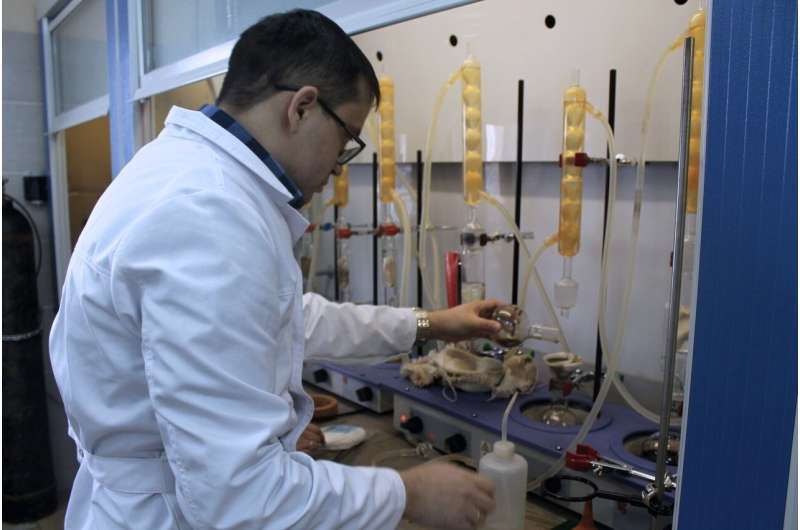Credit: Kazan Federal University
Steam-assisted oil extraction methods for heavy deposits have long been the focus of attention at Kazan Federal University. In particular, much attention is paid to in-situ combustion catalysts.
One of the latest research projects is dedicated to iron-containing catalysts including mixed Fe(II, III) oxides. The compounds are studied by Mössbauer spectroscopy.
"Mössbauer spectroscopy is based on the emission or absorption of gamma quanta in a solid without energy loss. In this work, Mössbauer spectroscopy helped determine the phase composition of catalyst particles before and after thermal steam exposure," says co-author Irek Mukhamatdinov.
The extreme sensitivity of Mössbauer spectroscopy is very conducive to the analysis of iron-containing compounds.
As a result, phase conversions of the oxides were studied. "In the oil industry, Mössbauer spectroscopy is often used to find out the scale of de-copperization of oil under the influence of a catalyst," adds co-author Aliya Khaidarova.
The conversion degree of the compounds increased as the duration of the experiment increased, which indicates that the disperse iron compounds participate multiple times in the cleavage of chemical bonds. Results of Mössbauer spectroscopy indicate that maghemite is reduced to magnetite when the iron oxides react with water vapor during the catalytic aquathermolysis of crude oil at 250°C.
More information: A. R. Khaidarova et al, Investigation of Structural Phase Conversions of an Iron-Containing Catalyst by Mossbauer Spectroscopy (Part 1), Journal of Applied Spectroscopy (2020). DOI: 10.1007/s10812-020-01054-7
Provided by Kazan Federal University
























